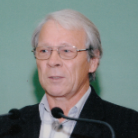Selected Papers from ISCTA 2018
A special issue of Materials (ISSN 1996-1944).
Deadline for manuscript submissions: closed (15 September 2019) | Viewed by 17137
Special Issue Editors
Interests: electronic transport in strongly correlated conductors; thermoelectric properties of materials; thermoelectric energy conversion
Special Issue Information
Dear Colleagues,
Welcome to the XVI Interstate Conference “Thermoelectrics and Their Applications, 2018” (ISCTA 2018). This conference is the 16th in the series of inter-state conferences on “Thermoelectrics and their Applications” that provides an international forum for presentations and information exchange on thermoelectric materials science and thermoelectric energy conversion technology. This biannual conference series began in 1985 in Saint-Petersburg (Leningrad), Russia, as a forum of thermoelectric community of the Soviet Union. After the collapse of the Soviet Union, the conference provides the meeting place for scientists from the Independent States of the former Soviet Union. Now, we cordially invite international thermoelectric community to join this meeting in one of the most beautiful cities of Russia.
Prof. Dr. Alexander T. Burkov
Prof. Dr. Vladimir V. Khovaylo
Guest Editors
Manuscript Submission Information
Manuscripts should be submitted online at www.mdpi.com by registering and logging in to this website. Once you are registered, click here to go to the submission form. Manuscripts can be submitted until the deadline. All submissions that pass pre-check are peer-reviewed. Accepted papers will be published continuously in the journal (as soon as accepted) and will be listed together on the special issue website. Research articles, review articles as well as short communications are invited. For planned papers, a title and short abstract (about 100 words) can be sent to the Editorial Office for announcement on this website.
Submitted manuscripts should not have been published previously, nor be under consideration for publication elsewhere (except conference proceedings papers). All manuscripts are thoroughly refereed through a single-blind peer-review process. A guide for authors and other relevant information for submission of manuscripts is available on the Instructions for Authors page. Materials is an international peer-reviewed open access semimonthly journal published by MDPI.
Please visit the Instructions for Authors page before submitting a manuscript. The Article Processing Charge (APC) for publication in this open access journal is 2600 CHF (Swiss Francs). Submitted papers should be well formatted and use good English. Authors may use MDPI's English editing service prior to publication or during author revisions.
Keywords
- thermoelectric materials
- thermoelectric devises
- thermoelectric energy conversion







